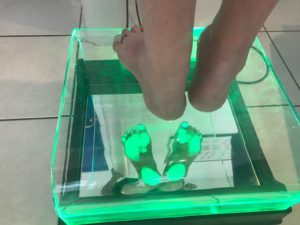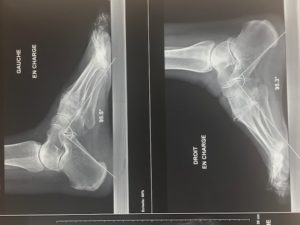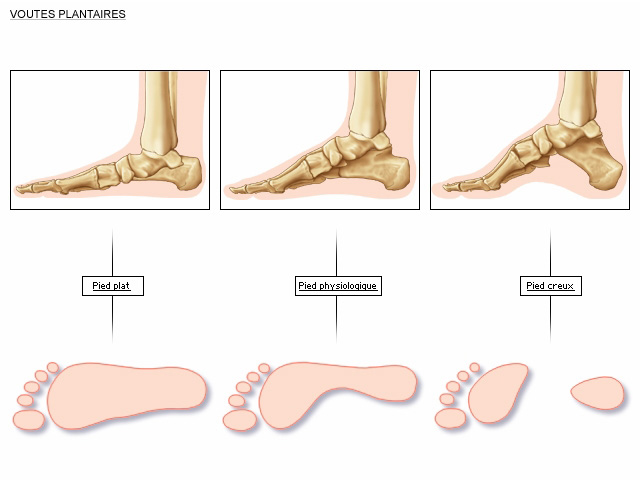Definition, Clinical
The cavus foot or exaggeration of the arch (the middle of the foot does not touch the ground, as dug) is always pathological (including related to nervous disorders to be discarded). It does not correct itself with growth but is often well tolerated. Most often, the heel moves inward (varus cavus foot), and the forefoot looks outwards (pronation): “helical” foot.
The cavus foot can be manifested by pain in the front or back of the foot, from discomfort to shoes wearing, claw toes, repetitive ankle sprains, cutaneous-metatarsal thickening. If there is significant deformation, walking on the lateral edge of the foot may lead to the development of osteoarthritis.


Cavus Foot Treatment
The pre-therapeutic check-up contains standard and specific x-rays of the ankle axis. In case of suspected neurological cause, we prescribe an Electro-Myogram, an MRI of the lumbar-sacral spine.
The therapeutic management of the cavus foot is diverse: pedicure, soles (in order to increase the contact surface on the ground), adaptation of the shoes (small heel, increase in size) or even orthopedic shoes made to measure, rehabilitation exercises (extension of the posterior chain).
Surgical possibilities include:
- bone cuts (osteotomies to correct heel varus, and pronation of the forefoot,
- a tarsectomy (a bone corner is removed to decrease the cavity),
- arthrodesis (blockage of the foot if fixed or progressive deformation),
- support for the disabling claw toes.



